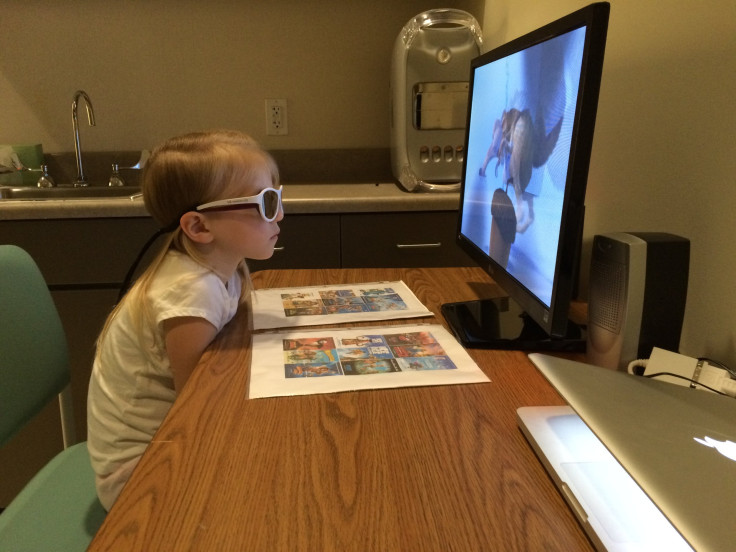Lazy Eye Treated By Watching Movies: Keeps Kids Entertained While Strengthening Weak Eyes

For decades, children with amblyopia, or a “lazy-eye,” have been treated by wearing a patch over the stronger eye to strengthen the weaker eye. Lazy eye is the most common cause of vision problems in children, who end up having a harder time reading a blackboard, completing schoolwork, and participating in gym class. But a new study, published in the Journal of the American Association for Pediatric Ophthalmology and Strabismus, reveals a new treatment that could improve a child’s lazy eye and put the patch approach to rest.
According to the National Eye Institute, amblyopia causes reduced vision in one of the eyes when the neural pathways between the brain and eye can’t communicate properly. As a result, the brain begins to favor the other eye and strengthen it, which is why doctors work to balance out strength with a patch. Early interventions are the most effective, so the researchers of the current study targeted child-friendly treatments to minimize further development of the condition.
For the study, researchers used dichoptic therapy, which presents different images to each eye separately, to train both eyes at the same time in eight 4- to 10-year-old children. Each child was shown three popular animated movies each week over the course of two weeks. During each session, both eyes were partially blocked with irregular shapes so that each eye saw different parts of the screen. This forced the children to use both eyes to fill in the blanks, which then helped to strengthen the eyes and train them to work in unison.
When researchers used eye charts to measure how many lines the children could read, they found a drastic improvement within a smaller time frame. Previously, researchers had tried using dichoptic techniques with simple learning games rather than movies to see if they could fill in the blanks as they learned. But 40 percent of unsupervised patients refused to play the games with image-blocking glasses. Instead, children were much more compliant to watch one of their favorite movies with pieces missing on the screen.
"Children achieved one to four lines of improvement in visual acuity with just six sessions of dichoptic movie viewing over two weeks," said the study’s lead author Eileen Birch, a researcher at the Retina Foundation of the Southwest, in a press release. "Patching, by comparison, requires 120 hours of treatment to achieve one line of improvement in amblyopic children who have already been treated with spectacles for 12 to 16 weeks."
Last year, clinical trials on dichoptic video game therapy among adults with amblyopia found that it improved vision more than wearing patches did on a control group. The results were similarly successful in children, who were able to improve their eyesight with such efficiency that researchers believe dichoptic therapy could be used as an alternative to other therapies in the future.
"If the feature film approach has efficacy similar to the contrast-balanced perceptual learning tasks and games, it may lead to home-based binocular amblyopia therapy with greater compliance," Birch said. "Dichoptic feature films could be useful as a primary, supplemental, or maintenance treatment for amblyopia."
Source: Birch EE. Journal of the American Association for Pediatric Ophthalmology and Strabismus. 2015.



























